Whole animal butchery is something I've wanted to be more skilled at for a number of years. Sure, I've purchase thousands of pounds of ruminant meat and try to process whole fowl whenever I can, but whole lamb, pigs, and cows can be big, costly and intimidating.
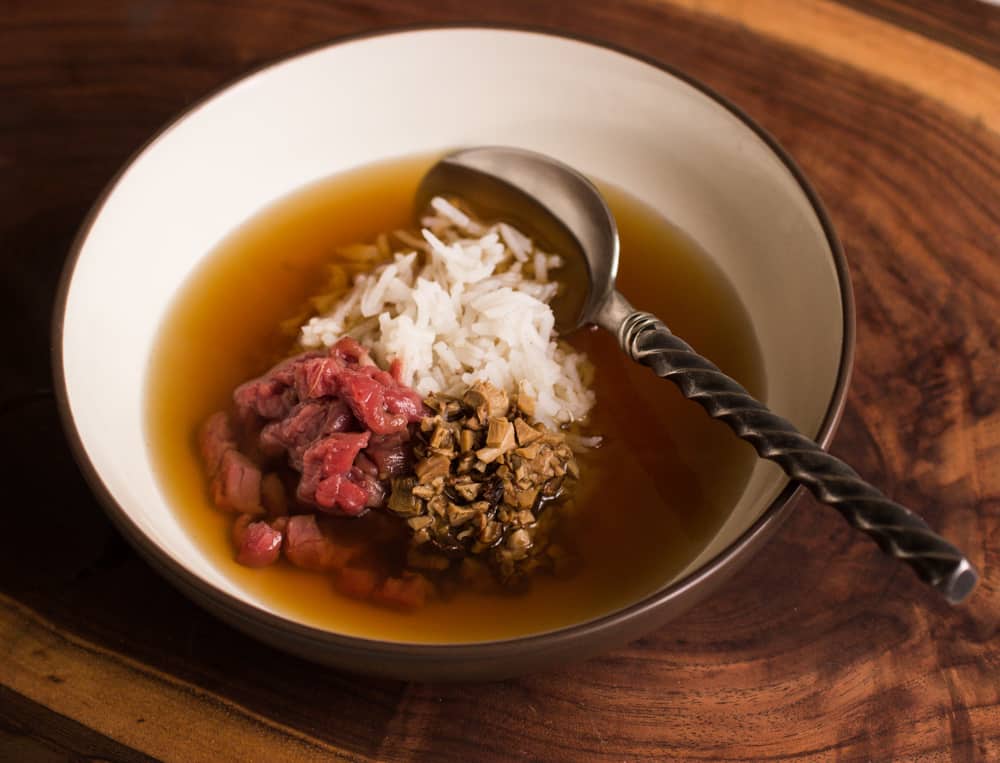
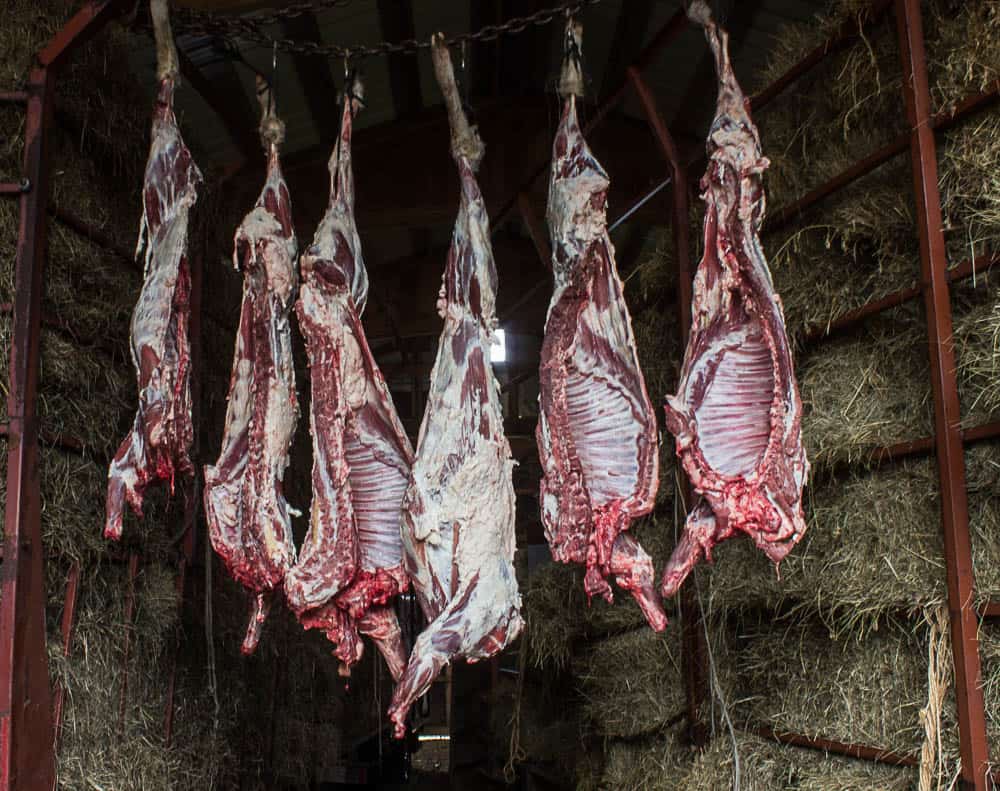
Luckily my girlfriend has a farm where all sorts of creatures live, and 2 years ago I got asked to be a part of my first whole-lamb butchery. My sous chef from Argentina came out with me and we cut up a couple of lamb into manageable pieces for the family.
Afterwords there was a lot of trim. Most of it went into a grinding pile for making sausage, but some of it I squirreled away, especially the parts with lots of cartilage and bone attached, since it makes wicked broth.
I ended up making a couple really simple dishes with the broth I made. My favorite was the simplest, just clear lamb broth infused with dried boletes poured hot over some cooked rice and diced raw lamb. It was reminiscent of the hot broths with raw meat you get at Asian restaurants here and there. The hot broth cooks the meat as you stir it but doesn't cook it so far as to make it tough-it's a bit like poaching, giving a nice, tender result.
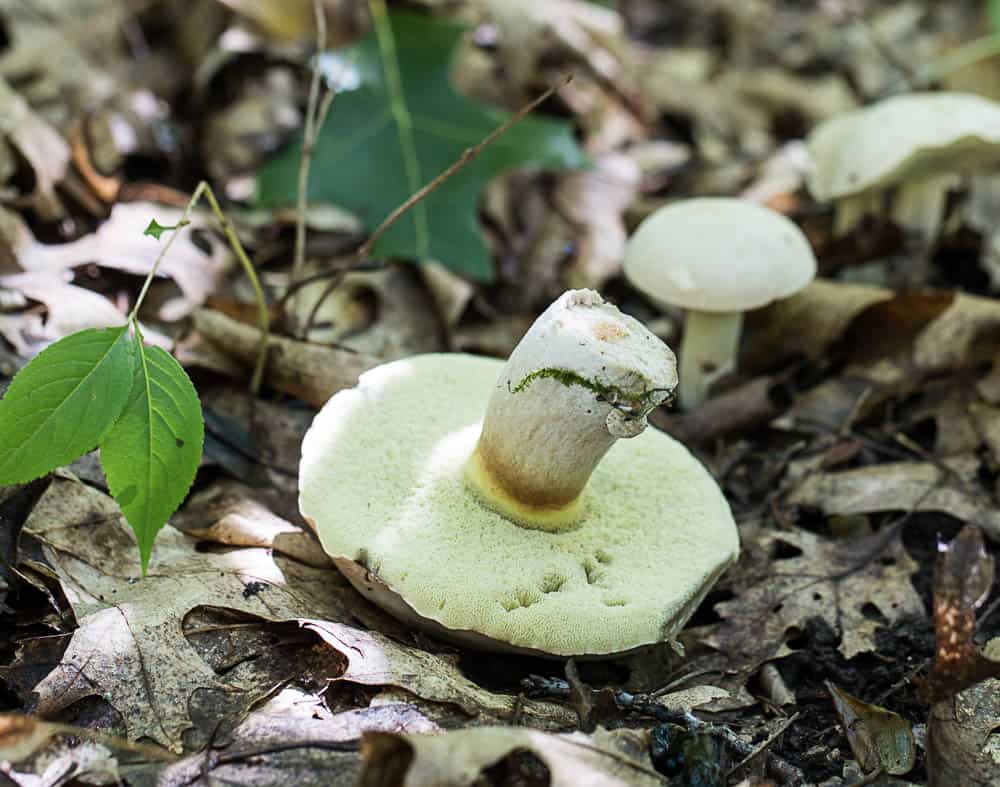
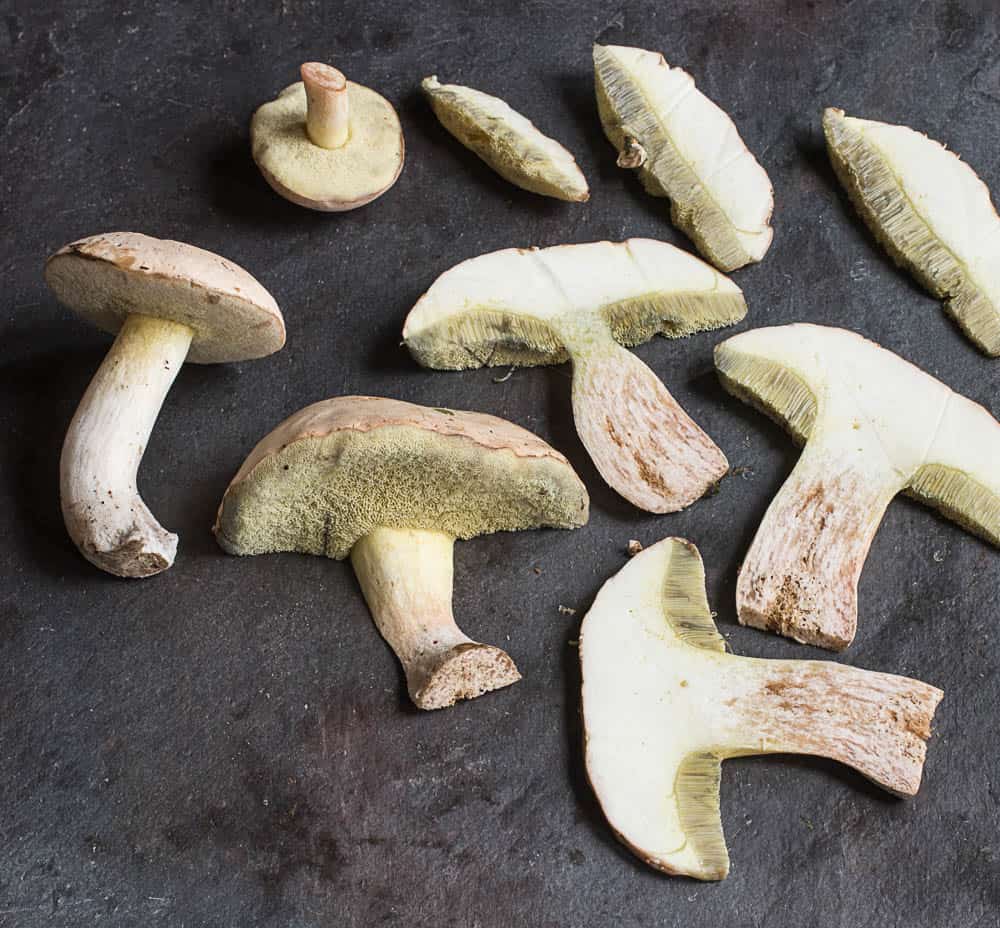
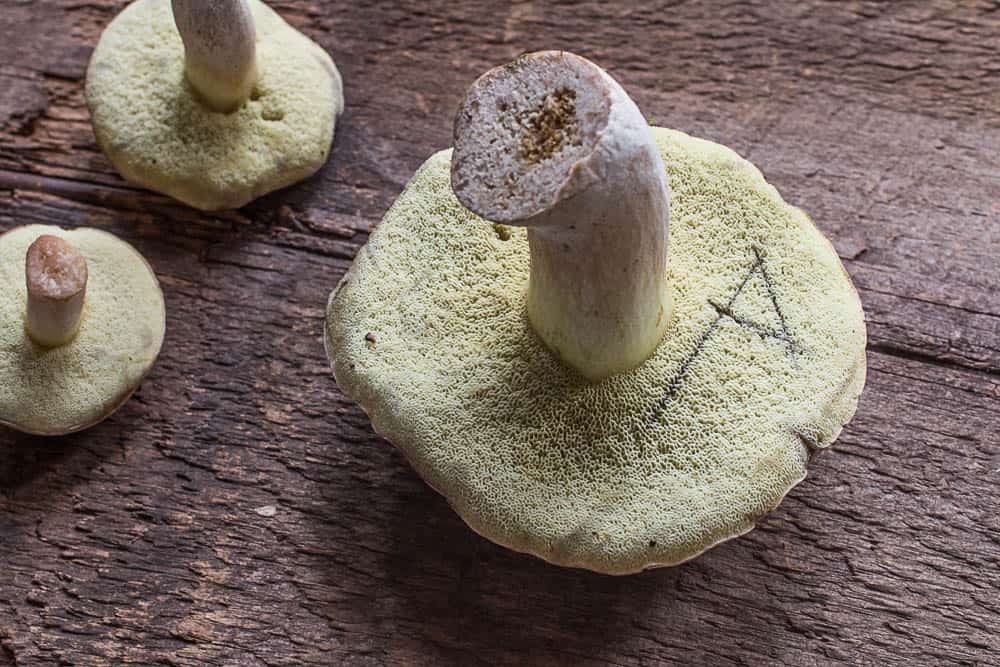
It was a great way to use up some of the Boletus pallidus I'd found this year, which are a little different from porcini you'd typically see people picking. Like their name impllies, they're a bit pale looking compared to typical Edulis family boletes/porcini, and they don't have the bulbous stems sported by some of their cousins.
Either way, Boletus pallidus is an excellent shroom for the table and seems to have a slightly better resistance to bugs, which is always appreciated. As far as flavor goes, it seems to have a lighter flavor than other boletes I'd label as porcini. Individual identities of mushrooms can be impossible to showcase in complex dishes, so this is all about the mushroom aroma: really good, but simple broth, rice and mushrooms. Less is more.
Lamb Broth With Boletus Pallidus Broth and Rice
Equipment
- Cheesecloth, Strainer, Stock Pot, Roasting Pan
Ingredients
Broth
- 5 lbs of lamb trim and scrap and a few bones (or use all bones if trim isn't available)
- 2 cups each cut into large dice: carrots onion and celery
- 1 cup dry red wine
- ¼ cup flavorless oil like grapeseed, safflower or canola
- Water to cover about 3 qts
Bouquet: wrap these ingredients in cheesecloth and tie with twine
- A few cloves of garlic whole
- 10 black peppercorns
- a few sprigs of fresh thyme
- 2 fresh bay leaves or 1 dried
- 1 bunch of parsley
- The green top of a leek washed and cleaned of dirt
For finishing the dish
- Cooked jasmine or basmati rice or another grain or rice you like
- 3 ounces fresh lamb meat per person cut into small dice or roughly ¼ inch cubes
- 1 ounce dried Boletus pallidus mushrooms or another dried mushroom, like porcini or other boletes
Instructions
- Pre-heat an oven to 375, then lay the lamb trim out on a sheet tray lined with parchment (it makes cleanup easy afterwords) and roast until deeply colored and golden brown, roughly 45 minutes, during the last 15 minutes, toss the vegetables with oil and add the vegetables to the sheet tray (this may take longer depending on your ovens intensity).
- Next, transfer the roasted trim and vegetables to a slow cooker ( I like the 6-7 qt size), then add the wine and lamb. Cover with water until the ingredients are nearly covered, but not covered completely (I describe this to line cooks as when the vegetables look like hippopotamuses floating in the water).
- Cook for 6-24 hours at a slow simmer or high setting on a slow cooker (preferably 24 hours for maximum collagen extraction) until the broth is deeply colored and aromatic. Strain out the solids and reserve the broth, you should have about ½ gallon of liquid.
- Season the broth lightly with salt to taste, add the mushrooms and infuse for 20 minutes, remove, chop finely and reserve. Cool the stock.
- To serve, put some cooked rice, raw diced lamb, and some of the finely chopped mushrooms in a warm bowl. Ladle very hot broth over the ingredients at the table, then serve. You can also let guests pour hot broth out of a coffee pot or something similar at the table for a DIY effect/interactive course.
Notes
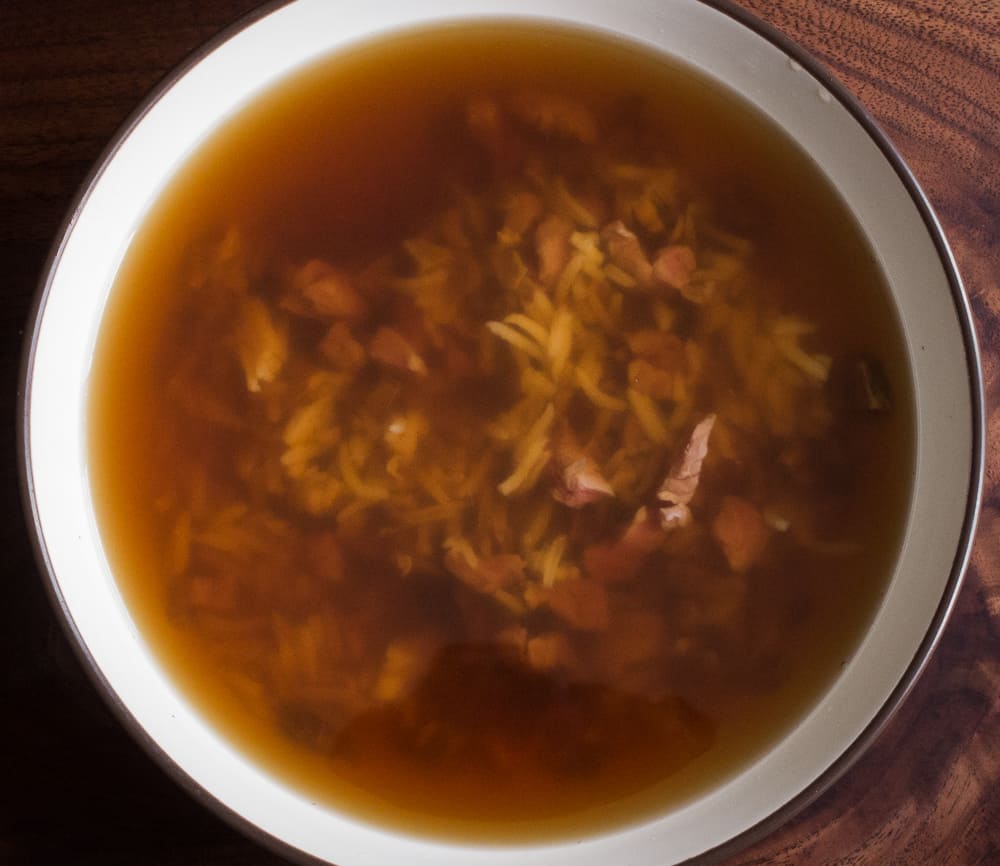

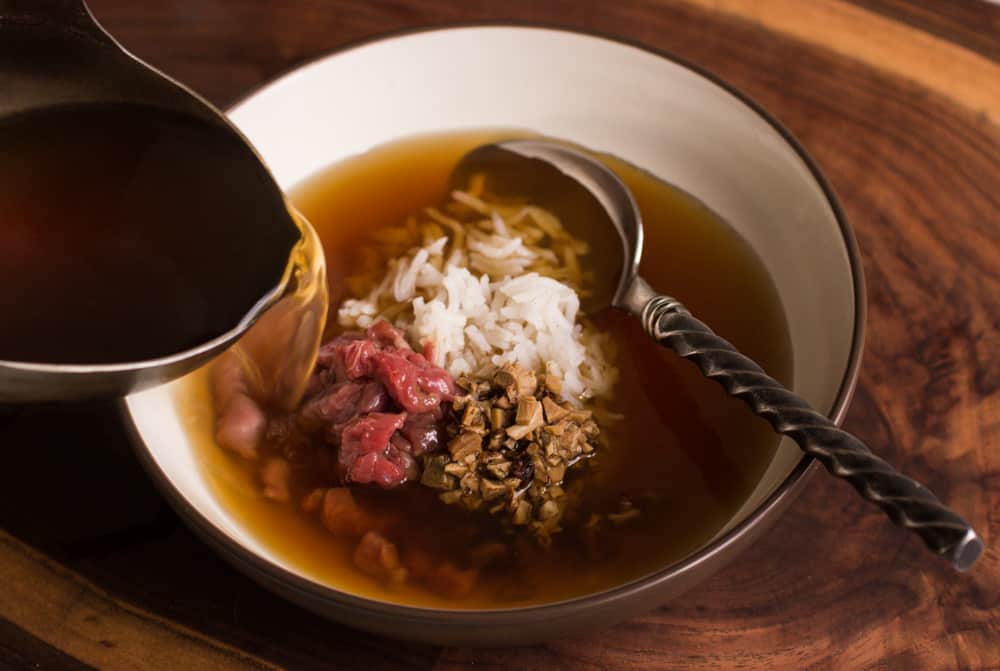
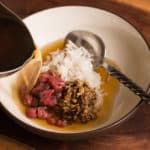
Joe Wiercinski
This is more question than comment. Is 350 F hot enough to brown meat and meaty bones in 45 minutes? I do that step at 425 to 450 F, turning the bones after 40 minutes or so to brown a second surface, and find that browning takes considerably more time at a higher temperature than your recipe suggests. Am I going too far? How brown is the brown a cook might get at 350 F.? Now I gotta line up some lamb bones in quantity. This looks delicious!
Alan Bergo
You're totally right Joe, you could have problems browing bones up at that temp, depending on your oven. This recipe, although it can be hard to see at first glance, is made with "scrap, trim, and a few bones"-mostly meat. At temps around 350-375 ish, pieces of scrap and trim will cook just fine, since they're very small. Obviously not everyone is going to be butchering lamb and have that much trim to roast, as it would be expensive and hard to source. The original recipe was for 10 lbs of trim and a just couple bones, and was very well browned in a shorter time since it was done in a brand new Southbend wind oven in a resto, but no one is going to have that on hand at home. What I did here is try to write something thats a compromise of what the notes in my journal say, and what people could actually reproduce at home. Most stock recipes don't even give recipes for roasting, they just say "brown the bones". In hindsight I probably should've just written the recipe using bones, since they're more widely available, but that's not what I made the original recipe with. It can be tricky to balance helping people learn and keeping things true to what I originally made. Thanks for commenting, and I reworked the method a little to hopefully make things more clear to people.